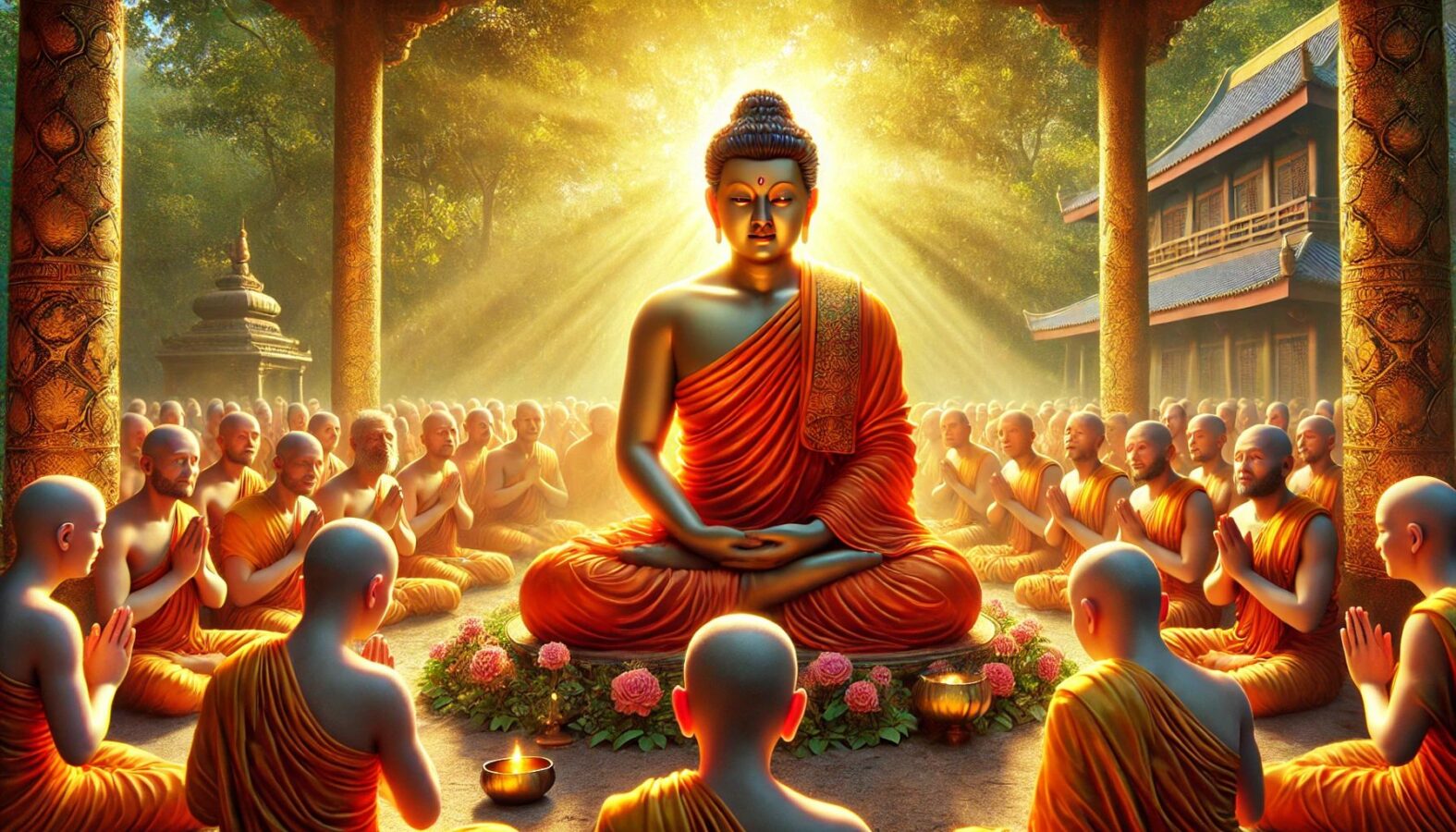
Date: 03/15/2025 03/16/2025
Location: Star Ocean Meditation Center
Teacher: Otto Huang
Dharma Talk
The Sharp-Witted Ajiraka Kāśyapa
Hearing the Dhamma in the Morning, Entering Nirvana in the Morning
One morning, as the Buddha was walking along the road to Rājagaha, preparing to enter the city for alms, Ajiraka Kāśyapa happened to be coming out of the city to attend to some matters.
Seeing the Buddha approaching from a distance, Ajiraka Kāśyapa quickly stepped forward to stop him and requested:
“Gotama! I have some questions I wish to ask you. May I take up a bit of your time?”
“Kāśyapa! Now is not the right time. I am about to enter the city for alms. I will answer your questions when I return.”
“Gotama! It will only take a short moment. Please?”
“Kāśyapa! Now is not the right time. Let us speak after I return.”
“Gotama! Why do you refuse me? Are you rejecting my request? It is just a small question. Please explain it to me!”
“Very well, Kāśyapa! Ask your question.”
“Gotama! Is our suffering self-created?”
“Kāśyapa! That is not how it is. If you ask in this way, I have no basis for discussion.”
“Then is suffering created by others?”
“Kāśyapa! If you ask in this way, I still have no basis for discussion.”
“Is it created by both self and others?”
“Kāśyapa! Asking in this way still provides no basis for discussion.”
“Then is suffering causeless, arising without reason?”
“Kāśyapa! That is not the case either.”
“Gotama! I asked whether suffering is self-created, other-created, both self- and other-created, or causeless, and you did not answer either ‘yes’ or ‘no,’ only saying that there is no basis for discussion. So, does suffering exist at all?”
“Kāśyapa! Suffering does indeed exist.”
“Gotama! Then do you not know suffering, do you not see suffering, so that you cannot answer my question directly?”
“Kāśyapa! It is not that I do not know suffering or do not see suffering. Kāśyapa! I do know suffering, and I do see suffering.”
“Gotama! Then please explain suffering to me so that I, too, may know and see suffering.”
“Kāśyapa! If the one who acted in the past and the one who experiences suffering afterward were the same, then I could answer you by saying, ‘Suffering is self-created.’ However, in that case, the agent and the experiencer would be permanently unchanging, which contradicts the reality of impermanence. This would be the erroneous view of ‘eternalism.’
If the one who acted in the past and the one who experiences suffering afterward were entirely different, then I could answer you by saying, ‘Suffering is created by others.’ However, in that case, the agent and the experiencer would be completely unrelated, which also does not align with reality. This would be the erroneous view of ‘annihilationism.’
If both self-creation and other-creation were valid, then I could answer you by saying, ‘Suffering is created by both self and others.’ However, since both self-creation and other-creation are incorrect, I do not state that suffering is created by both.
If, because it is not self-created or other-created, one were to claim that suffering arises without cause, I would not say so either.
Leaving aside these extreme mistaken views, and instead considering the matter in accordance with reality, it is thus: ‘When this exists, that exists; when this arises, that arises.’ More specifically:
Due to ignorance, volitional formations arise;
Due to volitional formations, consciousness arises;
Due to consciousness, name-and-form arise;
Due to name-and-form, the six sense bases arise;
Due to the six sense bases, contact arises;
Due to contact, feeling arises;
Due to feeling, craving arises;
Due to craving, clinging arises;
Due to clinging, becoming arises;
Due to becoming, birth arises;
Due to birth, there arise sorrow, lamentation, pain, grief, and despair—thus is the arising of this whole mass of suffering.
Conversely, ‘When this ceases, that ceases; when this is extinguished, that is extinguished.’ When ignorance is completely eradicated, volitional formations cease;
When volitional formations cease, consciousness ceases;
When consciousness ceases, name-and-form cease;
When name-and-form cease, the six sense bases cease;
When the six sense bases cease, contact ceases;
When contact ceases, feeling ceases;
When feeling ceases, craving ceases;
When craving ceases, clinging ceases;
When clinging ceases, becoming ceases;
When becoming ceases, birth ceases;
When birth ceases, all sorrow, lamentation, pain, grief, and despair—the entire mass of suffering—cease as well.”
Upon hearing this explanation, Ajiraka Kāśyapa was deeply shaken. His previous erroneous thoughts were shattered, and at that moment, he became free from all defilements, attained the purity of the Dhamma-eye, realized the truth, and understood the Dhamma. He comprehended the truth, entered the Dhamma, and was no longer doubtful or fearful. He joined his palms together in reverence and said to the Buddha:
“Blessed One! Now, I have understood. From this moment forward, I take refuge in the Buddha, the Dhamma, and the Saṅgha. I wish to be your disciple for life. Please bear witness to this.”
Having said this, Ajiraka Kāśyapa took leave of the Buddha and went on his way to carry out his work. However, not long after parting from the Buddha, he was attacked by a mother cow protecting her calf. He was injured and died. When he passed away, his face was peaceful and serene.
The Blessed One continued his alms round in Rājagaha, unaware that Ajiraka Kāśyapa had died shortly after leaving him.
Later, other bhikkhus heard that Ajiraka Kāśyapa had been fatally attacked by a cow. After their meal, they approached the Buddha and, curious, asked about Ajiraka Kāśyapa’s fate—what attainment he had reached and where he had been reborn.
The Buddha told the bhikkhus that Ajiraka Kāśyapa had realized and seen the Dhamma. At the time of his death, he was without attachment and had attained complete Nirvana, liberation. Thus, the Buddha confirmed Ajiraka Kāśyapa’s final liberation, giving him the first declaration of attainment.

